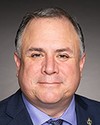With regard to the government’s participation in negotiations for a pandemic instrument or treaty: (a) what is Canada’s current position on the pandemic treaty, specifically with regard to equitable access to medical countermeasures such as drugs and vaccines, in particular (i) why Canada has proposed that technology transfers to enable other countries to manufacture their own drugs and vaccines only occur on “voluntary and mutually agreed terms” with pharmaceutical companies, even when those drugs and vaccines were developed with public funding from the government, (ii) what Canada proposes to do in situations where pharmaceutical companies do not enter into voluntary agreements, as it frequently did not happen during the COVID-19 pandemic and previous global public health crises such as HIV, (iii) how will Canada ensure that investments of public funds, including those by Canadian taxpayers, in pharmaceutical research, development, and manufacturing, delivers affordable and globally-accessible drugs, vaccines, and other health technologies to Canadians and people worldwide; (b) how is the government implementing the recommendations from the Standing Committee on Foreign Affairs and International Development vaccine equity report entitled “Overcoming the Barriers to Global Vaccine Equity and Ending the Pandemic” during its participation in negotiations for the pandemic instrument, and will the government follow the report’s recommendation 8 that it “ensure that its agreements to provide research and development funding include clauses that allow intellectual property resulting from that funding – including vaccines, therapeutics, and diagnostics – to be easily licensed to manufacturers serving low- and middle income countries”;
(c) how are the positions articulated by civil society during the Pandemic Instrument Partner and Stakeholder Engagement Forum reflected in Canada’s own positions in negotiation of the pandemic instrument; (d) which of the strategies and actions recommended by participants and contained in the government’s report on the Pandemic Instrument Partner and Stakeholder Engagement Forum does the government agree with; (e) which of the strategies and actions recommended by participants and contained in the government’s report on the Pandemic Instrument Partner and Stakeholder Engagement Forum does the government disagree with and why; and (f) how many meetings, emails and phone calls, and on what dates, have officials from (i) Global Affairs Canada, (ii) the Public Health Agency of Canada, (iii) Health Canada, (iv) the Privy Council Office, (v) Public Services and Procurement Canada, (vi) Innovation, Science and Economic Development Canada, (vii) the Office of the Prime Minister, had with (A) Innovative Medicines Canada, (B) pharmaceutical company representatives, (C) Canadian and international not-for-profit or charitable organizations, on the subject of pandemic instrument and the revision of the International Health Regulations?











